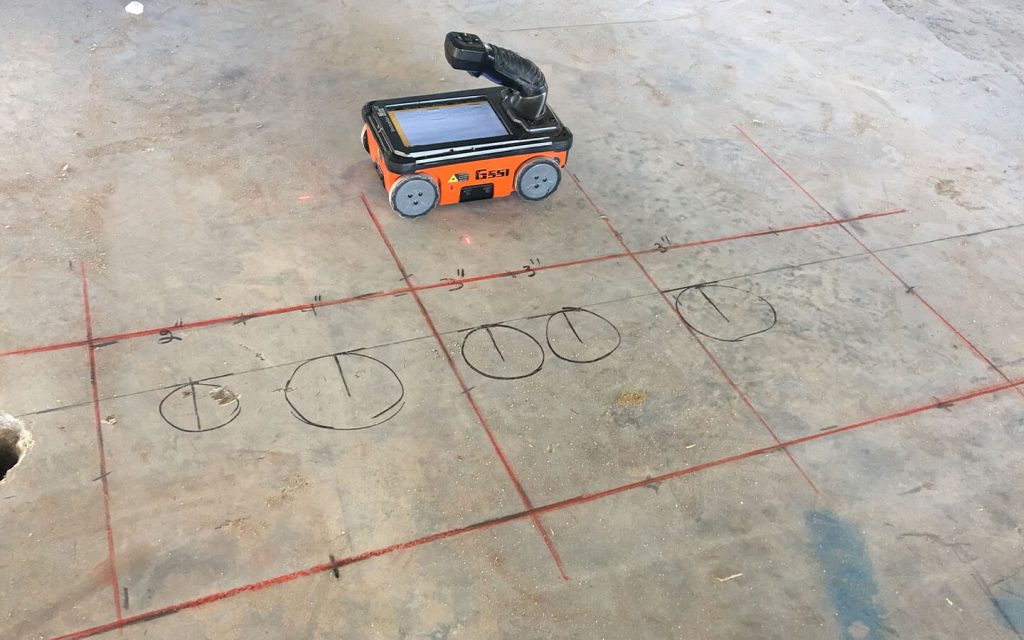Unveil the Transformative Power of Concrete Scanning in Optimizing Effectiveness and Security
Concrete scanning has arised as an important tool in the building sector, offering unmatched advantages in boosting task performance and making certain safety and security standards. The transformative power of concrete scanning exists in its capacity to supply thorough insights and real-time data, transforming just how projects are intended and carried out.
Value of Concrete Scanning
Making sure the architectural stability and security of building jobs begins with the essential action of carrying out complete concrete scanning. Concrete scanning is a non-destructive approach made use of to identify and map subsurface elements within concrete structures.
Additionally, concrete scanning aids in optimizing job timelines and budget by avoiding unforeseen expenses and delays that may arise due to unanticipated obstructions within the concrete. Inevitably, spending in comprehensive concrete scanning is a proactive technique that boosts both efficiency and security in building tasks.
Just How Concrete Scanning Functions
Concrete scanning runs as an essential device in construction tasks by employing innovative innovations to discover and map subsurface components without causing architectural damage. Ground Passing Through Radar (GPR) and Electromagnetic Induction (EMI) are 2 key methods used in concrete scanning. GPR jobs by giving off high-frequency radar pulses into the surface, which bounce back when they come across subsurface objects or voids. The moment considered the signal to return indicates the depth and place of the items. EMI, on the various other hand, utilizes magnetic fields to recognize variations in product compositions, such as recognizing rebar or channels within concrete frameworks.
Throughout the scanning process, the data gathered is examined in real-time, enabling immediate identification of possible dangers or obstacles beneath the surface area. By employing these advanced modern technologies, concrete scanning significantly decreases the threat of costly problems and injuries on construction sites.
Advantages of Concrete Scanning
One of the key benefits of concrete scanning is the capacity to detect and locate ingrained things such as rebar, post-tension cable televisions, and avenues properly. Concrete scanning aids in preparation and creating more successfully, as it gives precise information regarding the area and depth of structural parts.

Situation Research Studies: Concrete Scanning Success

In another situation, a building business utilized 3D concrete scanning to analyze the condition of aging concrete frameworks in a historic building. The thorough scans provided valuable understandings into the level of damage and assisted focus on upkeep initiatives effectively. By proactively attending to areas of problem determined via scanning, the business was able to expand the life-span of the structure and make certain occupant safety.
These instance researches emphasize the transformative check my site power of concrete scanning in enhancing effectiveness, precision, and safety and security in building and construction jobs.
Applying Concrete Scanning in Projects
Implementing advanced scanning innovations throughout construction tasks has actually become increasingly crucial for boosting precision and safety. By integrating concrete scanning into job planning and execution, building and construction teams can identify prospective hazards, such as rebar or post-tension cables, concealed within concrete frameworks. This aggressive strategy decreases the risk of crashes, delays, and expensive rework, ultimately bring about much more reliable job timelines and spending plans.
To implement concrete scanning efficiently, job managers should collaborate very closely with seasoned scanning professionals to establish one of the most ideal scanning methods for the particular task demands. Involving scanning specialists from the beginning of a task makes it possible for the team to produce thorough scanning strategies that attend to crucial locations of worry and make sure comprehensive data collection.
Furthermore, incorporating concrete scanning right into regular job operations can streamline decision-making procedures, as real-time check information supplies prompt insights right into the condition of concrete frameworks - Concrete Scanning. This data-driven method assists in informed analytic and enables teams to make adjustments immediately, fostering a society of efficiency and safety and security throughout the project this article lifecycle

Conclusion
To conclude, concrete scanning plays a vital duty in improving effectiveness and security in building jobs. By making use of innovative technology to find and map out underlying structures within concrete, this process helps to avoid expensive errors, ensure structural integrity, and minimize dangers on site. With the capacity to discover concealed components and offer accurate information, concrete scanning proves to be an important device for enhancing job results and making best use of general success.
Concrete scanning is a non-destructive approach utilized to spot and map subsurface elements within concrete frameworks. Additionally, concrete scanning helps in maximizing job timelines and spending plan by preventing unforeseen prices and delays that might arise due to unexpected blockages within the concrete. One remarkable instance study includes a massive remodelling job where concrete scanning played a crucial duty in making certain task success.In an additional situation, a construction company used 3D concrete scanning to assess the condition of maturing concrete structures in a historical structure. By integrating concrete scanning right into task preparation and implementation, building teams can determine potential threats, such as rebar or post-tension cable televisions, concealed within concrete structures.